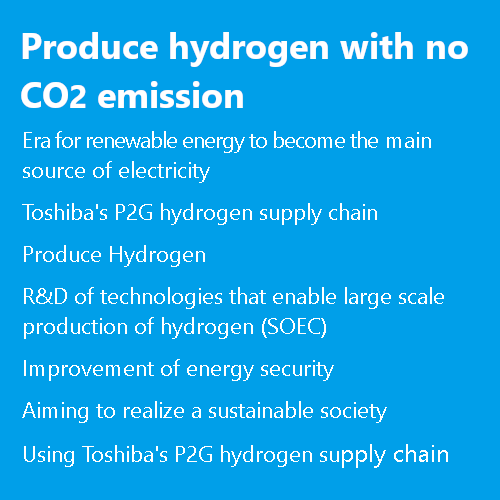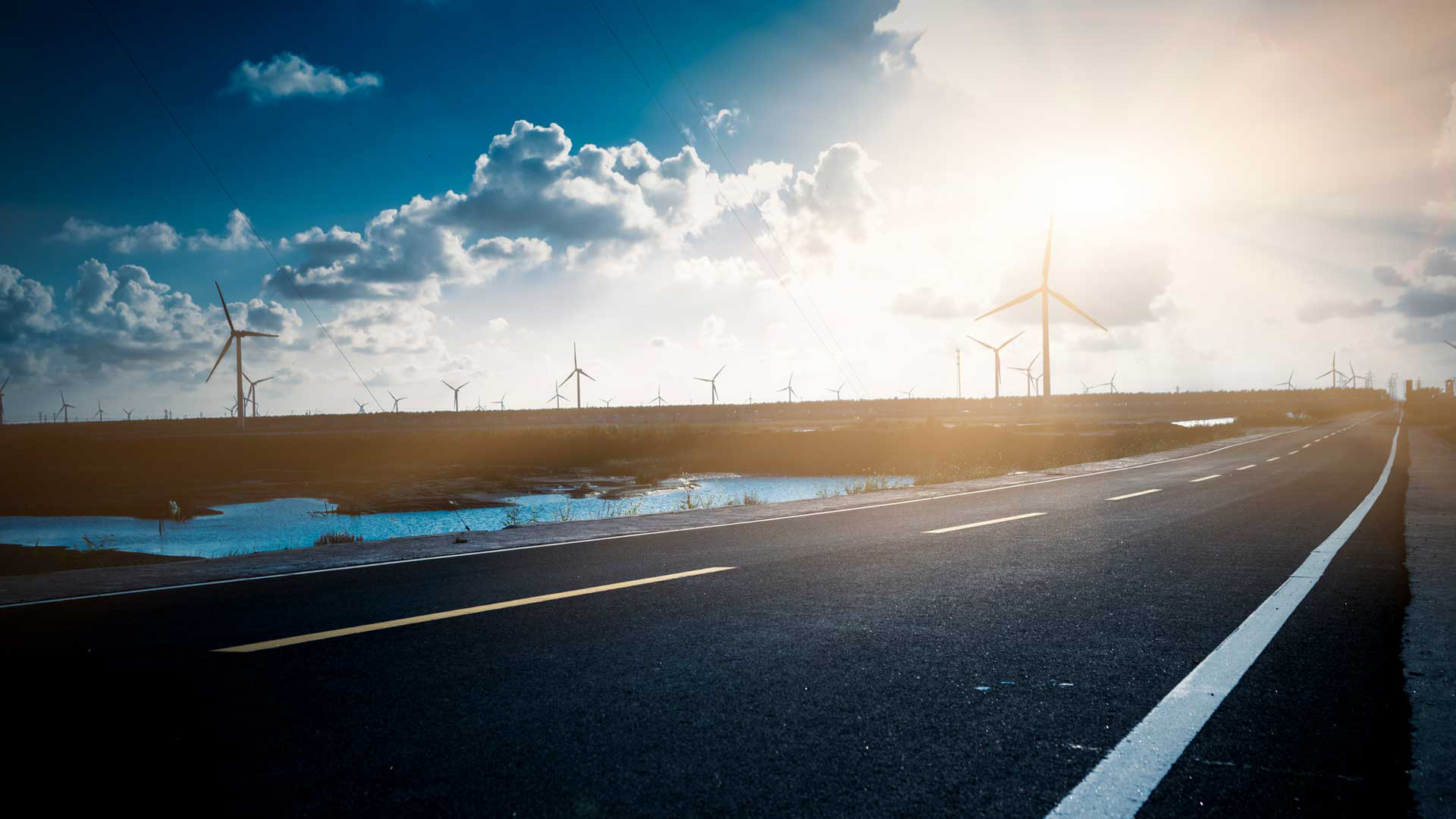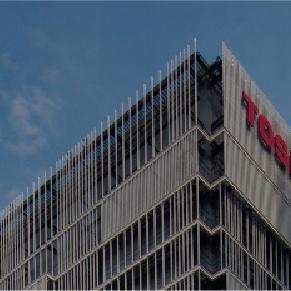Products and technical services
Produce Hydrogen
Surplus renewable energy can be stored and transported by converting it into hydrogen. This makes it possible to smooth out the fluctuations in renewable energy generation. Since the stored hydrogen can also be used as a fuel or a chemical material, Toshiba's hydrogen energy solution helps further increase the utilization of renewable energy. Toshiba provides CO2-free hydrogen supply chains using renewable energy.
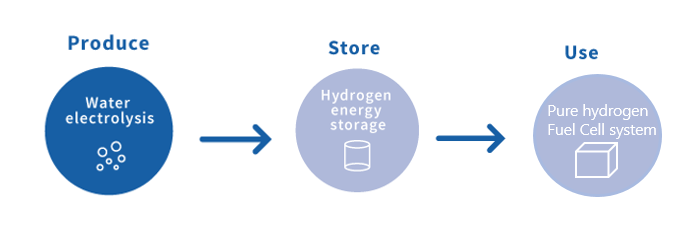
Era for renewable energy to become the main source of electricity
To reduce CO2 emissions, it is essential to promote renewable energy. However, since many renewable energy sources are intermittent and greatly dependent on weather conditions, it is assumed that much of the renewable energy generation will be suppressed at the time renewable energy becomes the main source of electricity.
To increase the utilization efficiency of renewable energy, it is necessary to use surplus energy.
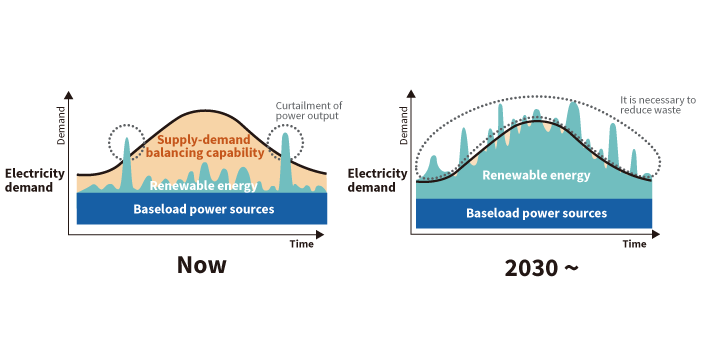
Toshiba's P2G hydrogen supply chain
The process of converting surplus electricity into hydrogen or other gas fuel is called power-to-gas (P2G). Once surplus electrical energy is converted into hydrogen, it can be used anytime, anywhere for various purposes. P2G provides the following benefits:
● Alleviation of constraints for grid electricity incurred by on-grid renewable energy
● Use surplus energy
● Adjusting grid power
● Reduced output of thermal and nuclear power generation
● Increased domestic energy self-sufficiency ratio

In addition to the effective utilization of surplus renewable energy, hydrogen can contribute to the reduction of CO2 emissions in various fields such as raw materials, fuels, and industrial processes.
Produce Hydrogen
There are several ways to produce hydrogen, but Toshiba's method of electrolyzing water does not generate carbon dioxide even during production, resulting in zero-emission energy circulation.

R&D of technologies that enable large scale production of hydrogen (SOEC)
SOEC: Solid Oxide Electrolysis Cell※1
Toshiba has been working hard on the development of a next-generation water electrolyzer called SOEC for producing large quantities of high-quality hydrogen※2. SOEC achieves approximately 30% higher efficiency and lower power consumption than conventional polymer electrolyte cells.
※1 SOEC: Solid Oxide Electrolysis Cell
※2 This development incorporates outcomes from 2014 NEDO research.
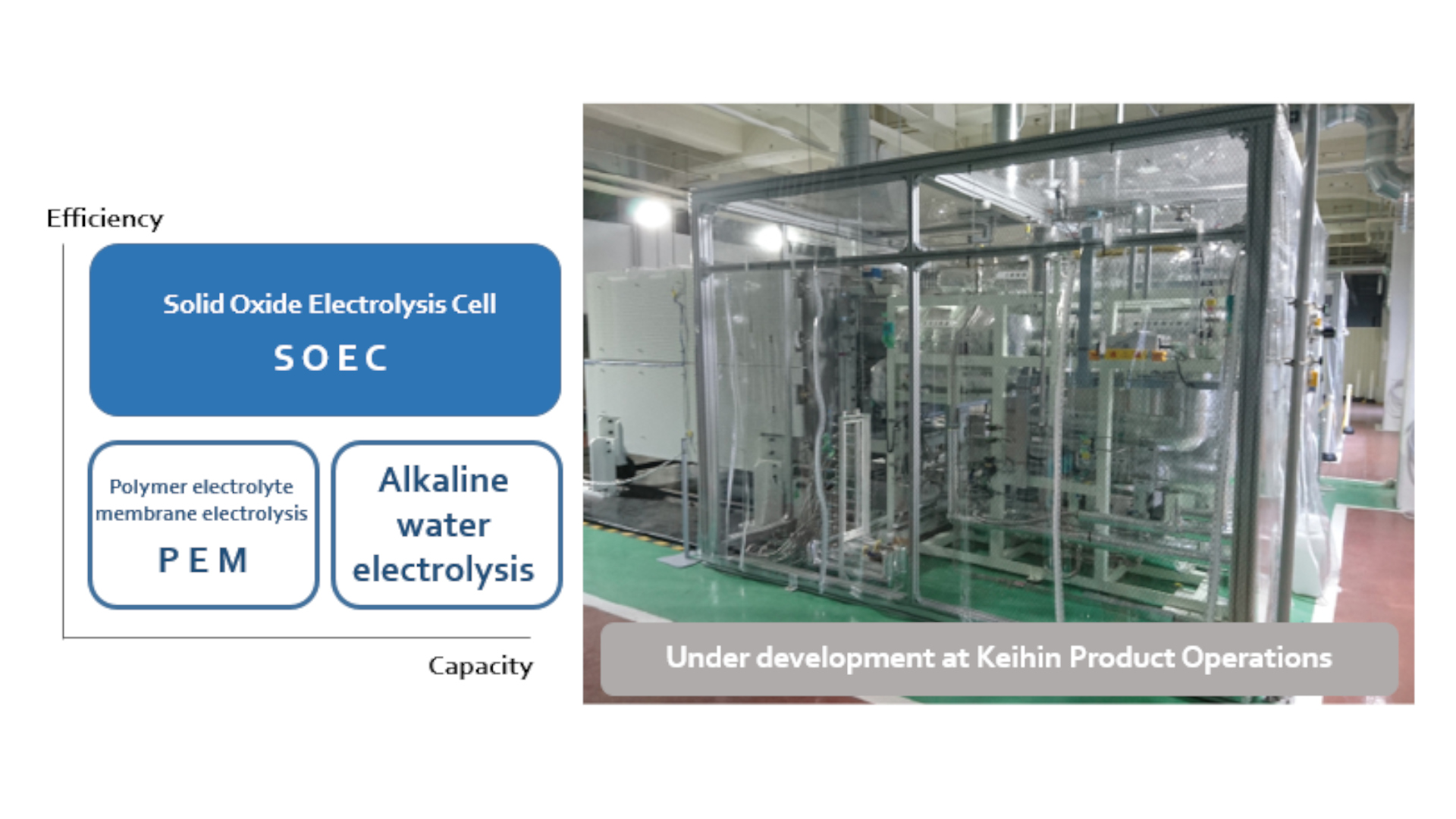
Improvement of energy security
Hydrogen made from water has another advantage besides not emitting CO2.
Since it is made from water, there is no need to import raw materials. Japan's energy self-sufficiency ratio is low, and the goal is to raise it to 30% by 2030. Hydrogen made from renewable energy and water is a self-sufficient energy source in Japan, which is rich in water.
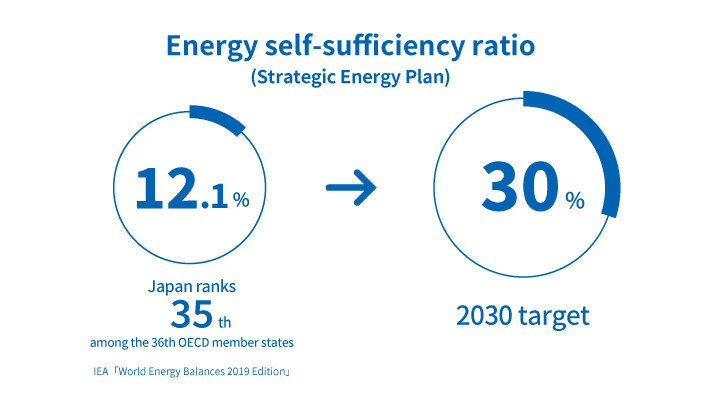
Aiming to realize a sustainable society
To maintain the health of the global environment for future generations, it is crucial to tap into CO2-free energy and use it without waste. Total energy management that takes into account when and where various forms of energy are consumed will contribute to the creation of sustainable and thriving communities.
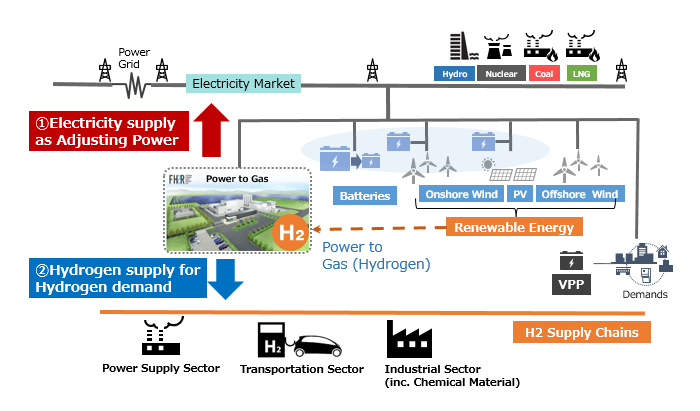
Using Toshiba's P2G hydrogen supply chain
Example: It is possible to produce a huge amount of hydrogen using a multi-megawatt solar power plant and supply the produced hydrogen to the facilities where it is required.
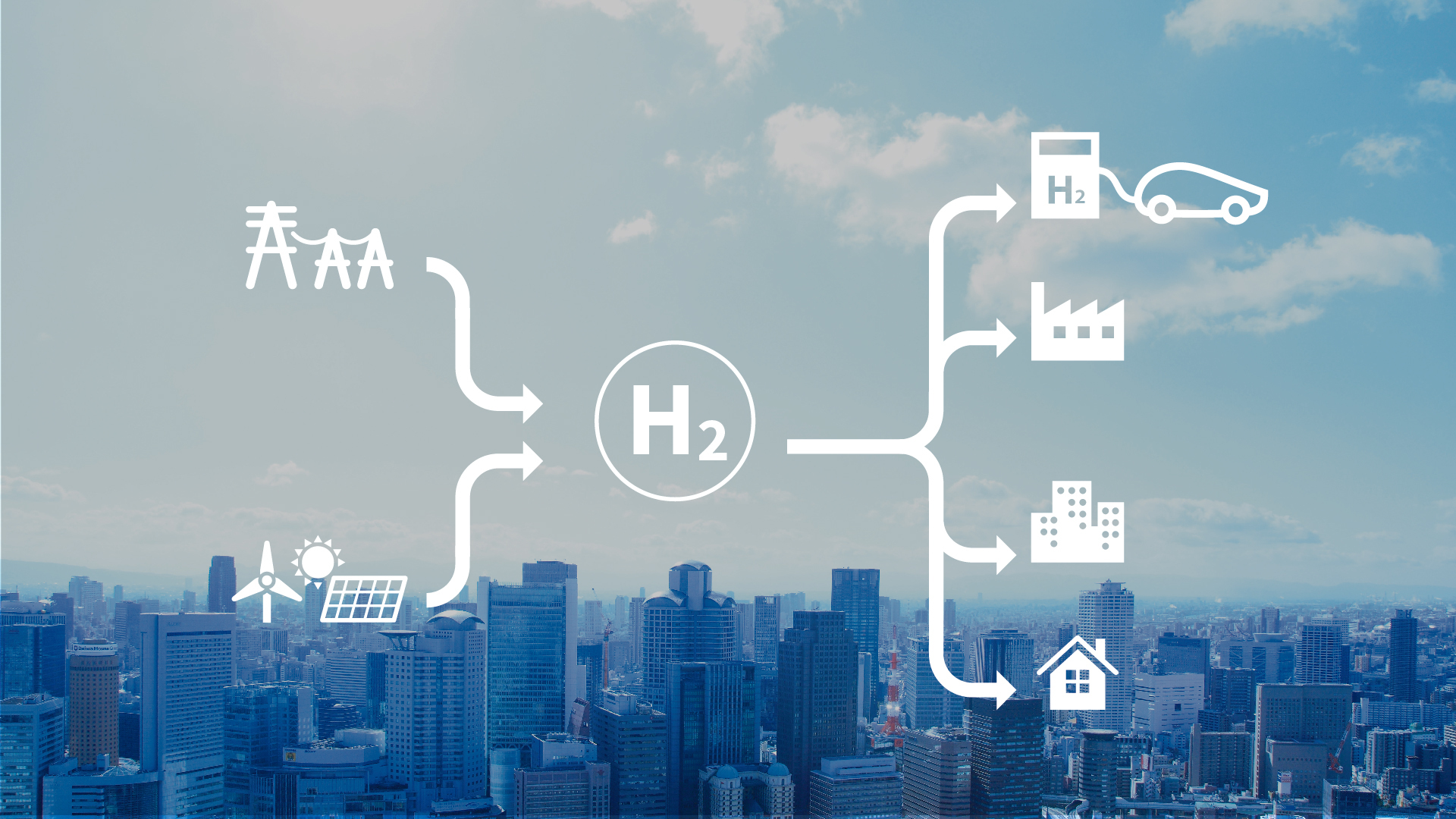
Example: It is possible to produce hydrogen using unused renewable energy and transport the produced hydrogen to a town where it is consumed.
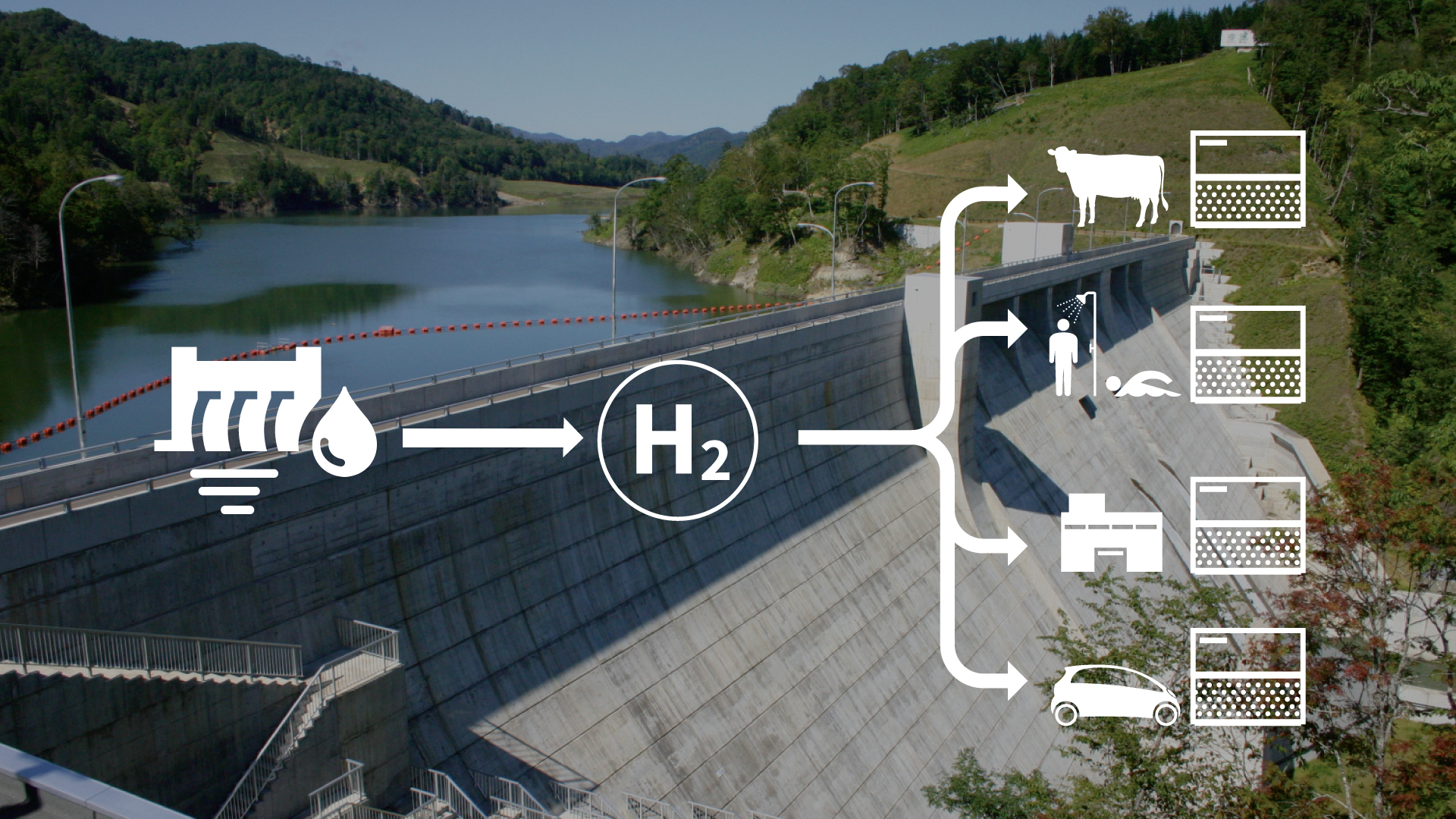
Example: It is possible to transport the hydrogen produced using renewable energy to the places where it is used as fuel for forklifts, etc.
Example of initiative: Demonstration project for the use of low-carbon hydrogen in the Keihin coastal area (Toshiba Corporation)
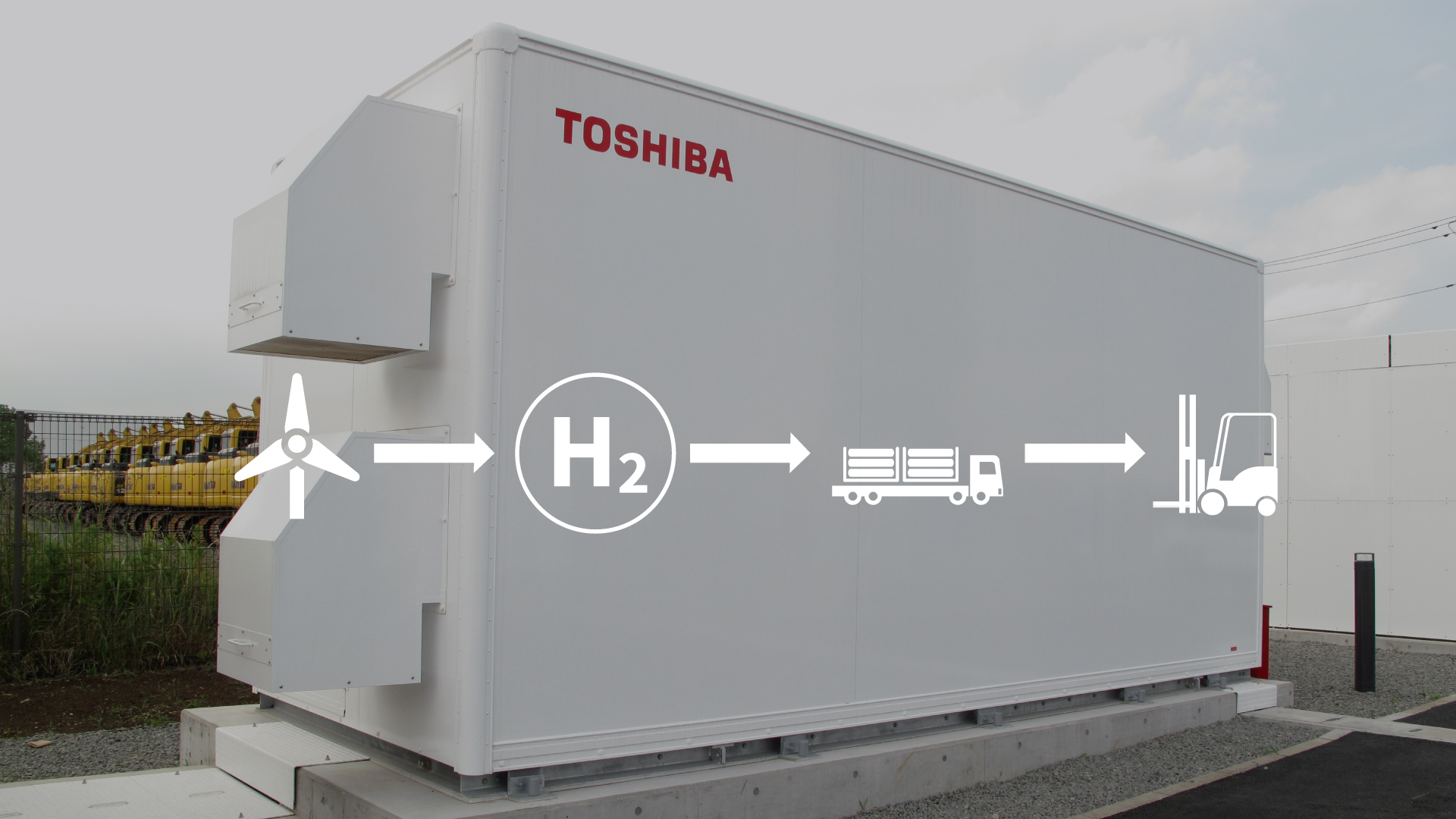
Are you interested in using smart energy to create a sustainable community or revitalize your community?



